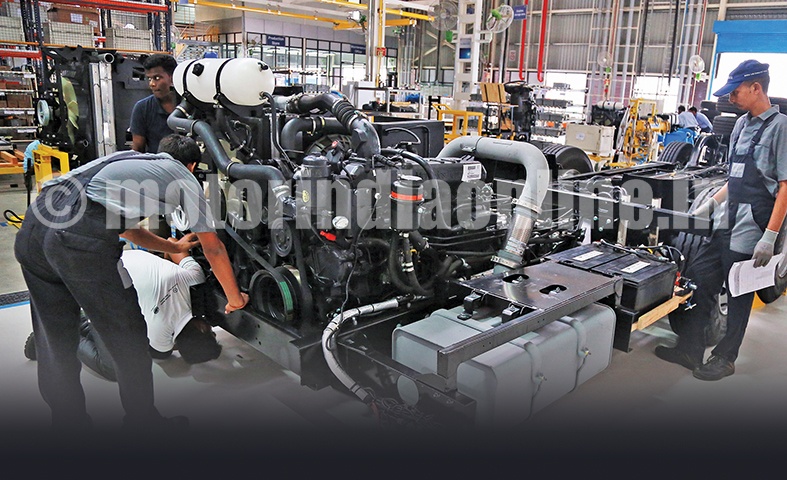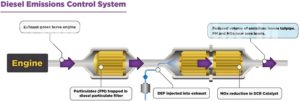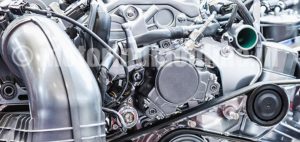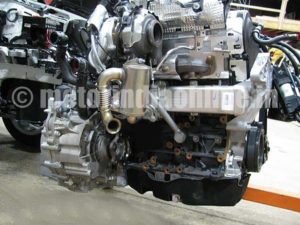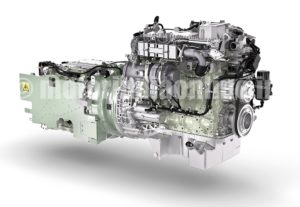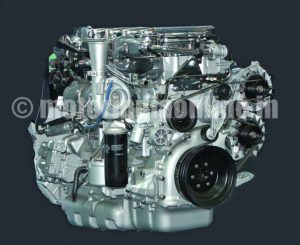Engine technology in India is moving in sync with changes in emission norms. It was during the beginning of the millennium that Bharat Stage (BS) emission norms were introduced, until when we had naturally aspirated engines. In order to comply with the emission norms, manufacturers adopted turbo-charged engines, followed by a shift to BS-II and subsequently to BS-III in 2008. In fact, it was when BS-III came in that it was for the first time we were looking beyond mechanical engines, with the introduction of common-rail engines and electronically-controlled rotary fuel pump engines. BS-III is almost equivalent to Euro-III emission standards for which almost all global manufacturers switched over to electronic engines. But India was unique in continuing with mechanical engines even to meet BS-III emission norms, in line with our frugal engineering approach.
In this article, we present some of the recent developments in the Indian market on the engine side including alternative fuel options being considered to replace fossil fuels.
Current developments
Since April 1st, the Indian auto industry has moved to the BS-IV era. These tougher norms require the engine parameters to be controlled more precisely and hence call for increased use of electronics. Every single intake and outlet of the engine is monitored and the ECU directs the engine accordingly. There are as many as 8 to 12 sensors, which as a whole, monitors the engine health as well as the emission levels. With respect to BS-IV, Indian engine manufactures are currently working on two different strategies –Selective Catalytic Reduction and Exhaust Gas Recirculation.
Selective Catalytic Reduction (SCR)
Selective Catalytic Reduction (SCR) is an advanced active emissions control technology system that injects a liquid-reducing agent through a special catalyst into the exhaust stream of a diesel engine. The reducing source is usually automotive-grade urea, otherwise known as Diesel Exhaust Fluid (DEF). The DEF sets off a chemical reaction that converts nitrogen oxides into nitrogen, water and tiny amounts of carbon dioxide (CO2), natural components of the air we breathe, which is then expelled through the vehicle tailpipe.
The SCR technology is designed to permit nitrogen oxide (NOx) reduction reactions to take place in an oxidizing atmosphere. It is called ‘selective’ because it reduces levels of NOx using ammonia within a catalyst system. The chemical reaction is known as ’reduction’ where the DEF is the reducing agent that reacts with NOx to convert the pollutants into nitrogen, water and tiny amounts of CO2. The DEF can be rapidly broken down to produce oxidizing ammonia in the exhaust stream. The SCR technology alone can achieve NOx reductions up to 90 per cent.
The DEF consumption with respect to diesel is in the ratio of 1:20, meaning, for every 1 litre of diesel 20 litres of DEF needs to be filled. The DEF is a non-toxic fluid composed of purified water and automotive grade urea and is available in a variety of storage and dispensing methods. SCR can reduce NOx emissions up to 90 per cent while simultaneously reducing HC and CO emissions by 50-90% and Particulate Matter (PM) emissions by 30-50%. SCR systems can also be combined with a diesel particulate filter to achieve even greater emission reductions for PM.
Exhaust Gas Recirculation (EGR)
Nitrogen oxides (NOx) are formed in the combustion chamber of engines when high temperatures cause oxygen and nitrogen (both found in the air supplied for combustion) to combine. A widely adopted route to reduce NOx emissions is Exhaust Gas Recirculation (EGR) which involves recirculating a controllable proportion of the engine’s exhaust back into the intake air. A valve is usually used to control the flow of gas and can be closed completely if required. The substitution of burnt gas (which takes no further part in combustion) for oxygen-rich air reduces the proportion of the cylinder contents available for combustion. This causes a correspondingly lower heat release, peak cylinder temperature and reduces the formation of NOx. The presence of an inert gas in the cylinder further limits the peak temperature.
The gas to be recirculated may also be passed through an EGR cooler, which is usually of the air/water type. This reduces the temperature of the gas, which reduces the cylinder charge temperature when EGR is employed. This has two benefits: the reduction of charge temperature results in lower peak temperature and the greater density of cooled EGR gas allows a higher proportion of EGR to be used. On a diesel engine, the recirculated fraction may be as high as 50% under some operating conditions.
Since EGR reduces the available oxygen in the cylinder, the production of particulates (fuel which has only partially combusted) is increased when EGR is applied. This has traditionally been a problem with diesel engines, where there is a trade-off between NOx and particulates.
The deliberate reduction of oxygen available in the cylinder will reduce the peak power available from the engine. For this reason EGR is usually shut off when full power is demanded, so the approach to controlling NOx fails in this situation. The EGR valve cannot respond instantly to changes in demand and the exhaust gas takes time to flow around the EGR circuit. This makes the calibration of transient EGR behaviour particularly complex. Traditionally the EGR valve has been closed during transients and then re-opened once steady state is achieved. However, the spike in NOx / particulate associated with poor EGR control makes transient EGR behaviour of interest.
Diesel hybrid technology
Diesel hybrids hold the promise of significant efficiency gains for commercial vehicles. By combining a smaller, fuel-efficient clean diesel engine with an advanced electric system, hybrid buses have demonstrated significantly improved fuel economy, along with reduced exhaust emissions and enhanced performance. Volvo has delivered two Hybrid 8400 buses to Navi Mumbai Municipal Transport (NMMT) and has achieved improvement in fuel performance up to 33%. Diesel hybrids have large potential fuel economy gains, and though the vehicle acquisition cost could also be high, it seems to be a more viable proposition than moving directly to full electric solutions. Technically, there is not much of a difference in the engine, though its capacity and power rating play a major part in the hybrid powertrain development.
While traditionally hybrid fuel technology has been deployed in buses, Volvo has upped the ante on the truck side as well, designing its first hybrid vehicle for long haul applications. In combination with other improvements in the truck, the total reduction in fuel consumption and CO2 is around 30 per cent. Volvo had revealed its Concept Truck in May 2016 and has now developed and enhanced the vehicle even further, with the new version featuring a hybrid powertrain, a first-of-its-kind for heavy-duty trucks in long haul applications, in addition to improvements in aerodynamics, rolling resistance and reduced weight.
Hybrids recover energy when driving downhill on slopes steeper than one per cent, or when braking. The recovered energy is stored in the vehicle’s batteries and used to power the truck in electric mode on flat roads or low gradients. In long haul transportation, it is estimated that the hybrid powertrain will allow the combustion engine to be shut off for up to 30 per cent of driving time. This will save between 5-10 per cent fuel, depending on the vehicle and its drive cycle.
Bio – Ethanol
The next wave in engine technology will be towards ethanol-powered engines. While CNG has been the most commercially available alternative fuel until now, ethanol seems to next in line and is fast gaining momentum. Ethanol is widely used in Brazil and in the US, with both countries together responsible for 87.1% of the world’s ethanol fuel production in 2011. Most cars on the road today in the US can run on blends of up to 10% ethanol.
Scania is now a global leader in ethanol-powered engines and has spent a remarkable period of 30 years researching in the field. The Swedish heavyweight has launched its latest Euro-VI ethanol engine for trucks which have the potential of reducing carbon emissions by up to 90 per cent, as recently verified in a three-year study of alternative fuels in heavy vehicle deliveries by the City of Stockholm. Apart from showcasing the successful operation of its fully ethanol-powered engine in Nagpur since 2014, Scania has also delivered 55 ethanol-powered Metrolink High Deck coaches to KSRTC in Bengaluru.
